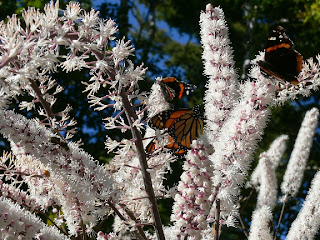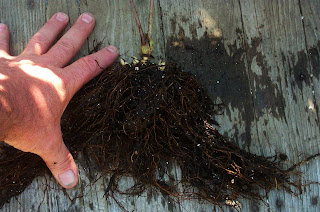Thursday, February 7, 2013
Just back from a walk with Karl the Wonder Dog. It's early yet and there's a slice of moon showing between the naked tamaracks and fir balsams and there are a few stars around. Trees are cracking in the woods from yet another night of below zero temperatures. The sky over Peacham Pond shows evidence of a clear and beautiful day ahead but I know differently. I always trust the Eye on the Sky Weather at the Fairbanks Museum and Planetarium in St Johnsbury and they are confirming we have snow coming late today and possibly into Saturday morning. It seems odd that over recent years, larger storms have settled in Boston than in Vermont but the two storms setting sight on New England will drop more on southern parts than here.
My pre-storm chores are already finished save for mounting the plow on the truck and that will happen this afternoon sometime. Everything is set in case we lose power as we did the other night. That leaves me today to continue updating our web page. Alex has some shopping he wants to do late morning and I don't know where that will take us. In winter when plants are dormant we have less of a schedule and that's really nice.
The latest series of trade and gardening magazines that have arrived have headlined using native trees, shrubs and flowers to lure butterflies and birds. I like that idea and have always kept it simple and productive. Years back--2004 I think it was--we put an addition on the house and part of the success was a steep bank outside my new office window. Long term I had plans for a patio affair but that part is still a thought, not a reality. What we did do was buy an assortment of 7 different spireas to hold the bank and bring in some flying beauty. It sure worked. All 35 spireas are now 3-5 feet across and each spring they put up new stems that turn to white, purple, red, maroon, lavender and creamy yellow flower heads that lure in all sorts of bees and butterflies by day, night flying moths after dark. This was an inexpensive fix for a large area. Gail added a few clumps of daylilies here and there and I added some basic echinacea, some yarrows, rudbeckias, and liatris.
From my experience, the plantings brought on smiles as butterflies arrived that I had not seen before and that made the project even more interesting. Today a few more milkweeds and mullein have worked their way in and although some gardeners see these rouges as just that, I find them to be season extenders that keep me in Monarch butterflies into September and goldfinches all winter feeding on mullein seeds.
So if the snow deepens over the next couple days at your home, think about plants that will bring a different level of happiness to next summer's gardens. It's not expensive and it is rewarding. Kids love butterflies too and it's a way to encourage an early understanding of our earthly neighbors and how we have to work together to keep things in balance.
Guess that's it for this morning. A large blue jay is looking in the window at me as if to say "Sunflower please." I do not speak blue jay but I can "see" the request. Be well!
George Africa
The Vermont Gardener
Vermont Flower Farm
On Facebook as Vermont Flower Farm and Gardens and also as George Africa
On Twitter as vtflowerfarm
Always here to help you grow your green thumb!











